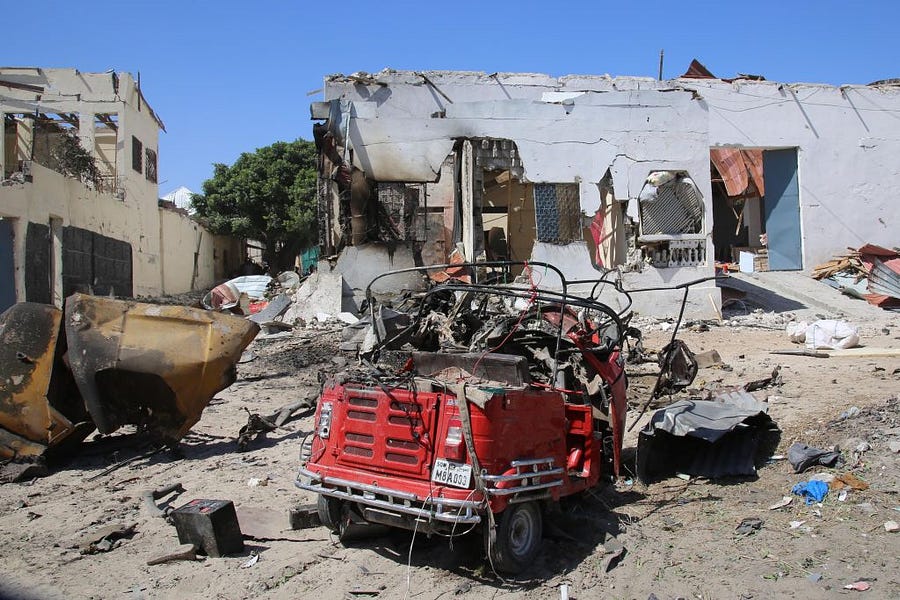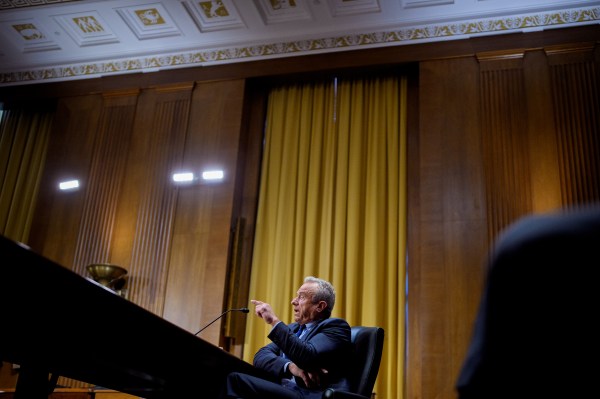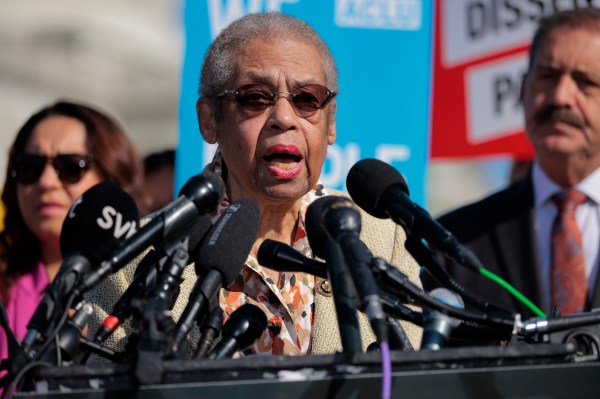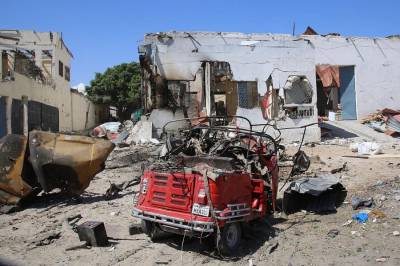In December, the State Department released its annual Country Reports on Terrorism. Even though it wasn’t published until the end of 2021, the report covers only the previous calendar year. Therefore, some of the material is clearly dated, including a passage touting the supposedly “aggressive action” taken by Afghan security forces against “terrorist elements” throughout 2020. Of course, those security forces no longer exist, as the Taliban overran the entirety of Afghanistan in 2021.
Still, the report provides a useful summary of the global terrorist threat more than 20 years after the 9/11 hijackings.
Three observations came to mind while reading the report.
First, the top leaders of both al-Qaeda and ISIS are alive.
The U.S. has hunted down many senior al-Qaeda and ISIS figures over the past two decades. And the State Department’s Country Reports on Terrorism highlights the top al-Qaeda personnel taken out in 2020. But the two most senior al-Qaeda and ISIS leaders on the planet—Ayman al-Zawahiri and Amir Muhammad Sa’id Abdal Rahman al-Mawla, respectively—have survived the American-led manhunt. They’ve also survived the bitter rivalry between their two organizations. This is no small accomplishment.
Zawahiri took over as al-Qaeda’s emir after his longtime comrade-in-arms, Osama bin Laden, was killed in May 2011. Zawahiri has now survived more than two decades of war since late 2001, and as al-Qaeda’s overall leader for more than a decade. Al-Mawla’s time at the top has been much shorter, but he has still managed to escape death for more than two years as the ISIS emir. Al-Mawla succeeded Abu Bakr al-Baghdadi after the first so-called caliph was killed in October 2019.
Does this matter? I think it does. It demonstrates that America’s high-value targeting campaign has missed some of its highest value targets.
Zawahiri, in particular, has been consistently underestimated by counterterrorism analysts and commentators. In fact, some even claimed that Zawahiri died sometime in 2020. That was disproven when the elderly Egyptian terrorist appeared in a video last September, praising an attack that occurred in Syria in January 2021. This means that either Zawahiri survived 2020, or his ghost is determined to haunt us from the grave. The State Department simply notes that Zawahiri remains “at large.”
This isn’t just about Zawahiri or al-Mawla. Both men oversee international organizations, with various committees dedicated to running their military, financial, and security affairs, as well as other facets of their global networks. Yet, the U.S. government hasn’t provided the public with any sort of comprehensive analysis of these organizations in many years. Simple questions are seldom asked, and never answered. For instance, how many jihadists currently hold seats on the shura councils—that is, the elite advisory boards—for al-Qaeda and ISIS? Who runs their military committees? How many senior figures remain alive within both groups? We don’t know, and there is remarkably little curiosity about these issues.
Some of al-Qaeda’s senior leadership remains in Iran.
One line in the report deserves additional emphasis. It reads: “Senior AQ leaders continued to reside in Iran and facilitate terrorist operations from there.”
As I’ve written on many occasions, the State and Treasury Departments have regularly exposed al-Qaeda’s network inside Iran since 2011. As Treasury first reported, the Iranian regime and al-Qaeda entered into a “secret deal” some years ago. Under the terms of their “agreement,” al-Qaeda is allowed to operate its “core facilitation pipeline” on Iranian soil. According to the State Department’s latest report, that remained the case throughout 2020.
Some folks have claimed that Iran and al-Qaeda can’t cooperate due to their theological differences. I won’t debunk that shallow argument once again here. But I will note that the U.S. government has repeatedly concluded otherwise. There’s a wealth of intelligence and other evidence showing that some of al-Qaeda’s most senior personnel remain stationed inside Iran to this day.
One part of al-Qaeda that is noteworthy in this regard is its so-called Hattin committee. The Hattin committee was established sometime in the past five years and is responsible for overseeing key parts of al-Qaeda’s global operations. Although this body has been mentioned in official reports published by the U.N. Security Council, the U.S. government has said next to nothing about it. For instance, the State Department’s County Reports on Terrorism highlights the August 2020 killing of Abu Muhammad al-Masri, a senior al-Qaeda leader, as a blow to the group, which it was. But neither State, nor any other arm of the U.S. government, has fully explained what Abu Muhammad al-Masri was doing at the time of his death.
According to counterterrorism officials I trust, Abu Muhammad was a key figure in the Hattin committee. And some of his longtime al-Qaeda accomplices, including a man known as Saif al-Adel, continue to lead this important al-Qaeda committee—from inside Iran—to this day.
Both ISIS and al-Qaeda continue to evolve.
For more than a decade, American politicians have sought to portray al-Qaeda and ISIS as all but defeated. This is especially true with respect to al-Qaeda. During the Obama administration, officials began claiming that al-Qaeda is a “shadow of its former self.” This phrase was repeated by some in the Trump administration. And President Biden has dabbled in similar rhetoric as well.
For the most part, however, the State Department avoids such triumphalist claims.
For example, State reports that despite a series of leadership losses, al-Qaeda “networks continued to exploit undergoverned spaces, conflict zones, and security gaps in the Middle East to acquire terrorist resources and conduct terrorist attacks.” Al-Qaeda also “further bolstered its presence abroad, particularly in the Middle East and Africa,” where several of its “affiliates … remain among the most active and dangerous terrorist groups in the world.”
I’ll add that the fall of Afghanistan to the Taliban in 2021 bolstered al-Qaeda’s hand even further.
ISIS is far from dead, too. Although “ISIS lost all the territory it had seized in Iraq and Syria, the organization and its branches continued to mount a worldwide terrorism campaign, carrying out deadly attacks globally.” In fact, “ISIS affiliates outside Iraq and Syria caused more fatalities during 2020 than in any previous year.”
In sum, the State Department’s Country Reports on Terrorism for 2020 shows why jihadism will continue to be a major international security concern—even if many others in Washington have already moved on.






Please note that we at The Dispatch hold ourselves, our work, and our commenters to a higher standard than other places on the internet. We welcome comments that foster genuine debate or discussion—including comments critical of us or our work—but responses that include ad hominem attacks on fellow Dispatch members or are intended to stoke fear and anger may be moderated.
With your membership, you only have the ability to comment on The Morning Dispatch articles. Consider upgrading to join the conversation everywhere.